If the gap between life and machine could whisper, it would sound like the hum of an AI's algorithm blending seamlessly with organic cells. One day, it might look like a forest of synthetic trees self-regulating Earth's temperature, or perhaps entire oceans cleansed by artificial algae designed to annihilate pollutants. This is not a work of speculative fiction, but a scientific frontier unraveling in real-time. The convergence of artificial intelligence, biology, and robotics is giving rise to a new class of lifeforms: Bio-AI hybrids. More than just tools, these entities blur the boundary between biology and technology, reshaping the world as they go.
With roots in disciplines as varied as synthetic biology and cosmological ethics, Bio-AI hybrids are not merely the musings of science fiction writers but are actively discussed by leading thinkers and visionaries like Ray Kurzweil, whose work on the Singularity ponders how humans will be transformed by intelligent machines; George Church, a pioneer in genetic engineering; and Kevin Kelly, a celebrated futurist exploring the symbiotic relationship between humans and technology. Such interdisciplinary studies make one thing clear: humanity has moved from observing life to creating it.
If we can engineer life, the question becomes this: Can blending biological engineering with AI redefine ecosystems for the better—or will it unleash unprecedented ethical, ecological, and existential dilemmas? As we stand on this threshold, the stakes couldn’t be higher. Bio-AI hybrids promise to combat climate change, restore biodiversity, and address some of humanity’s greatest challenges. But we must tread carefully. This isn't just an academic exercise; it's a leap into uncharted territory where every decision matters.
1.1 The Evolution of AI in Life Sciences
The roots of Bio-AI hybrids dig deep into humanity’s relentless pursuit of understanding life—only now, the script has flipped. Instead of observing lifeforms, we’re actively scripting evolution itself. Advances in AI, coupled with biotechnology breakthroughs like CRISPR-Cas9 and neural networks that mimic human-like thinking, have paved the way. From mapping the genome to engineering synthetic biological frameworks, the integration of robotics and AI into living systems is driven by momentous milestones.
Consider the neural network algorithms developed by Google DeepMind that mimic brain functions to solve complex problems, or the rise of bionics like Boston Dynamics robotics, bridging physical beings with computational learning. Such innovations reveal the growing synergy between programmable intelligence and living organisms. Layered over decades of progress in handling genetic code, AI serves as both the designer and executor in constructing Bio-AI hybrids.
1.2 Xenobots: The First Recognizable Bio-AI Hybrid
Say hello to the world's first Bio-AI hybrid: the Xenobots. Created from frog cells by researchers at the University of Vermont and Tufts University, Xenobots are AI-designed "living robots" capable of self-replication. Their purpose? Performing meaningful tasks, like clearing microplastics from oceans or aiding in medical research. These microscopic wonders represent how biology meets AI to accomplish what neither could achieve alone.
The Xenobot's very creation was guided by AI. Algorithms designed their shapes for optimal performance, simulating countless possibilities before settling on what worked. This milestone is not just fascinating; it’s proof of concept that the hybridization of organics and intelligence can produce entities with naturally inspired but computationally perfected behaviors. And while today's applications are experimental, their success indicates how similar creatures could transform ecosystem management.
2. Redefining Ecosystems: Applications of Bio-AI Hybrids
Imagine a forest where trees don’t just photosynthesize; they also filter out urban air pollutants with AI-augmented precision. Visualize algae hybrid organisms intelligently navigating rivers to clean up oil spills before they wreak havoc. These aren’t distant fantasies—they’re the bold new world Bio-AI hybrids aim to create. But how exactly can these revolutionary inventions reshape ecosystems? Let’s dive into their most promising applications.
2.1 Environmental Restoration and Sustainability
The environmental challenges we face today—climate change, pollution, biodiversity loss—are pushing us to seek audacious solutions. Enter Bio-AI hybrids, designed to act as ecological guardians. One exciting avenue involves hybrid trees augmented with artificial photosynthetic systems. These “robot-trees,” as described by researchers at MIT, can not only absorb carbon dioxide but also release enhanced oxygen levels. With sensors integrated into their design, they can monitor air quality and adapt their performance in real-time.
Similarly, scientists at the CSIRO have been developing AI-driven algae hybrids that detoxify polluted water systems. These bioengineered algae use machine learning to track pollutant levels, optimizing their toxin absorption ability dynamically. Such applications could make catastrophic events, such as the 2010 Deepwater Horizon oil spill, easier to combat, reducing the long-lasting environmental impact.
An inspired hypothetical scenario involves designing artificial coral reefs to adapt to rising ocean temperatures. By combining programmable materials with AI-sensitive feedback loops, these reefs could detect and respond to changes in their surroundings, ensuring marine biodiversity has a fighting chance. Projects like this could combat reef loss like we’re seeing at the Great Barrier Reef and, perhaps, restore some of its lost vibrance.
2.2 Biodiversity Conservation Using Bio-AI Hybrids
Biodiversity loss is one of the most pressing concerns of our time, and Bio-AI hybrids offer unique tools to address it. De-extinction, the resurrection of extinct species, has gained momentum thanks to advancements in AI-guided DNA replication. Companies such as Colossal Biosciences are leading efforts to bring back the woolly mammoth by splicing its DNA with that of modern-day elephants. While controversial, these bio-robotic replicas could theoretically restore balance to ecosystems disrupted by their absence.
Equally intriguing is the idea of AI-augmented predator and prey systems. Imagine bioengineered predators programmed to thrive on invasive species, such as lionfish in the Atlantic, without disrupting native populations. This fine-tuned predator-prey relationship could rejuvenate ecosystems and maintain biodiversity. Yet, caution is needed—what happens if these hybrids migrate to unintended regions?
Another exciting concept involves AI-enhanced pollinators, such as robot bees, to artificially augment agricultural production. Urban farms in megacities like Tokyo and New York could depend on these hybrids to ensure food security. Researchers from Tokyo Institute of Technology have already developed small bio-robotic drones delicately capable of carrying pollen from one plant to another. These applications reveal the enormous possibilities of Bio-AI to redefine both natural and urban ecosystems.
3. The Science Behind Bio-AI Hybrids: A Technical Blueprint
What makes a Bio-AI hybrid tick? At first glance, these innovations might seem more like the product of science fiction than rigorous science. However, their sheer complexity stems from the interdisciplinary collaboration of artificial intelligence, biotechnology, and robotics. Let’s lift the hood and see how exactly these hybrids are crafted.
3.1 How These Hybrids Are Designed
Building a Bio-AI hybrid involves a concert of AI, biological engineering, and mechanical systems. It all begins with machine-learning algorithms that model optimal biological forms. Think of it as AI playing the role of a digital architect, synthesizing countless computer simulations to map out how a hybrid should look and behave. For instance, the AI system used in designing Xenobots relied on detailed simulations to determine which frog cells would form structures capable of autonomous behavior.
Once AI determines the blueprint, the biotechnology team steps in. Using tools like CRISPR, they manipulate organic materials at the genetic level to embed properties specified in the AI design. Then comes the robotics team, responsible for merging these biological frameworks with cybernetic mechanisms. This integration allows the hybrid to sense, respond, and function independently.
One fascinating example comes from synthetic biology researchers at Harvard’s Wyss Institute, who are working to develop programmable tissues embedded with AI chips. These tissues can carry out predefined tasks such as repairing damage or secreting beneficial chemicals automatically.
3.2 Control, Autonomy, and Learning
What sets Bio-AI hybrids apart from other innovations is their ability to learn and adapt. Reinforcement learning algorithms allow hybrids to autonomously calibrate their behavior over time. This might look like swarms of self-replicating bio-robots that analyze environmental feedback loops, adapting their movements to collect oceanic microplastics with greater efficiency after each cycle.
Adaptive intelligence in hybrids isn’t just theoretical. A team at Carnegie Mellon University has pioneered machine-learning systems that allow soft robots to mimic biological movements, such as crawling or grasping an object. When applied to a hybrid combining organic muscles with robotic intelligence, the results are startlingly lifelike. These principles are already visible in projects like AI-driven prosthetics for paralyzed individuals, which learn the user’s movements and improve over time.
One exciting area is the development of swarm intelligence in Bio-AI ecosystems. A collaborative experiment between ETH Zurich and Stanford University demonstrates how multiple robots or bio-engineered organisms can operate in tandem to complete complex tasks, such as constructing intricate habitats for endangered species or distributing nutrients across arid lands.
But the question remains: How much control is too much? As these Bio-AI organisms gain autonomy, wetware (biological matter) and hardware (AI-driven circuits) are becoming harder to distinguish. The ethical and scientific implications of this dynamic will be as critical to monitor as the technology itself.
4. Ethical and Societal Implications of Bio-AI Hybrids
4.1 Moral Questions: Are These Hybrids Alive?
The question of whether Bio-AI hybrids are "alive" is more than a philosophical exercise—it’s critical to how humanity defines its role as creators. Picture a Xenobot, a creation born of frog cells artfully designed by AI to clean up microplastics. Is it just a machine made of living tissue, or does it meet the criteria for life? While hybrid organisms might mimic biological processes like movement, self-repair, and even reproduction, their reliance on AI algorithms and synthetic designs complicates how we classify them.
Organizations like the World Health Organization (WHO) and institutions such as Stanford University are beginning to debate the legal and ethical considerations around creating artificial life. For example, should these hybrids have rights if their behavior suggests autonomy? Or are they just tools to be used and discarded? The lines blur when these entities begin to exhibit decision-making using machine learning, giving rise to debates about algorithms as analogs for "free will."
The moral reverberations extend further: What happens if these hybrids are designed to emulate endangered species or extinct ones like woolly mammoths? Could they become symbols of humanity’s technological ingenuity or, conversely, reminders of ecological hubris? Philosophical questions abound, and as we tinker with the building blocks of life, the answers could redefine "natural."
4.2 Risks of Disrupting Ecosystems
Despite their potential for good, Bio-AI hybrids come with risks capable of unsettling even the most optimistic futurists. Consider ecosystem disruption, a problem familiar to conservationists worldwide. Introducing synthetic hybrids into the wild—whether as ecological saviors or de-extinction projects—may produce unintended consequences. According to recent surveys from researchers at Cambridge University, engineered organisms could become invasive species, inadvertently outcompeting the very ecosystems they were designed to save.
Imagine a scenario where a swarm of AI-enhanced pollinators replaces the dwindling global bee population. Sounds perfect, right? But if these artificial bees dominate pollination cycles, natural bees may face extinction, cascading into agricultural imbalances. The problem isn’t just theoretical; bioengineered hybrids might evolve in unpredictable directions, unlocking what biologists call horizontal gene transfer, where genetic material crosses to wild organisms in ways it never should have. In fact, history teaches us caution—look no further than invasive species disasters like cane toads in Australia or kudzu in the southern United States.
Addressing these risks requires governance frameworks that simply don’t exist yet. No single entity regulates the deployment of Bio-AI hybrids in any robust way, leaving gaps for misuse or negligence. Furthermore, synthetic organisms could even amplify risks of new bioengineered pathogens. Should hybrid organisms fall into the wrong hands—think bioterrorism scenarios—the damage could be catastrophic. Governing bodies such as the United Nations and collaborative alliances like the North Atlantic Treaty Organization (NATO) will need to prioritize cooperative oversight to mitigate fallout.
Ponder this: Are humans wise enough to wield this much control over life and ecosystems? Or will these innovations spiral beyond governance, delivering unintended consequences we’re powerless to reverse?
5. The Future Potential of Bio-AI Hybrids
5.1 Transformative (and Controversial) Applications
From speculative fiction to scientific aspirations, the transformative potential for Bio-AI hybrids is vast—and controversial. Imagine a future where hospitals regularly deploy programmable cells to heal injuries, regenerate organs, or deliver targeted medications. This isn’t pure imagination; breakthroughs in synthetic biology at institutes like MIT suggest that programmable tissues powered by artificial intelligence are already on the horizon.
One dazzling example? AI-guided "cyborg implants" enabling individuals to overcome physical disabilities or even augment their senses, as seen in early prototypes like Elon Musk’s Neuralink. By integrating biology with robotics, these implants could transform human capabilities, bridging the gap between humans and superhumans.
Beyond medicine, consider Bio-AI hybrids in infrastructure. Could bioengineered plants one day power energy-efficient "living cities"? Picture skyscrapers where solar-powered AI plants regulate carbon dioxide levels, produce oxygen, and adapt to disruptions like storms. Visionary urban planners at groups like Arup are already exploring such remarkable possibilities.
However, such transformative advancements can spark controversy. How do we draw the line between enhancement and inequality? If wealthy countries monopolize access to Bio-AI technologies, could socioeconomic disparities widen? And what about existential risks like hybrids becoming uncontrollable? These debates underline how technologies designed to serve humanity may also redefine it.
5.2 The Balance Between Promise and Peril
Every cutting-edge technology walks a tightrope between promise and peril, and Bio-AI hybrids are no exception. When deployed responsibly, they could rejuvenate dying ecosystems and revolutionize healthcare. Yet, their potential misuse might lead us into an era of moral and ecological chaos. Let’s examine the dilemma through these possibilities:
- Promise: Bio-AI hybrids offer unprecedented solutions for addressing global challenges, such as climate change mitigation, through AI-augmented coral reefs or self-healing agricultural bio-enhancements. The positive impact could ripple through industries, inspiring fields like green technology.
- Peril: The risk of hybrid armies or biological disasters looms great. Weapons-grade hybrids could destabilize national security worldwide, falling into rogue hands or spiraling into environmental accidents.
Perhaps most compelling is the broader existential quandary. By stepping into the role of "life engineers," humanity isn’t just altering species but redefining what life itself can mean. Are we architects of a brighter future or inadvertent creators of our downfall? Collaborations between biotechnology companies like CRISPR Therapeutics and environmental think tanks like Greenpeace will be pivotal in ensuring that hybrids fulfill their lofty promises while minimizing their dangers.
In the end, the choice is ours—as citizens, as scientists, as stewards of a fragile planet. But the window to act responsibly is narrowing. If history has taught us anything, it's that technological advancements cannot be undone; they can only be managed.
6. AI Solved Solutions (How would AI tackle this issue?)
Imagine if artificial intelligence were tasked with designing the next generation of Bio-AI hybrids. What framework would it follow to balance cutting-edge innovation with ethical and ecological responsibility? Here’s how a forward-thinking AI might approach the challenge step-by-step: an algorithmic pathway to ensure we mitigate risks, maximize benefits, and tread lightly on the principles of life and biodiversity.
6.1 Step 1: Design Principles Rooted in Environmental Compatibility
The cornerstone of any Bio-AI hybrid must be compatibility with existing ecosystems. AI would analyze native ecological conditions using predictive models, such as those employed by Yale University's Environmental Engineering Lab. These models could help identify opportunities to introduce hybrids that enhance, rather than disrupt, fragile environments. For instance, consider a bioengineered mangrove species with embedded AI sensors to regulate and adapt to changing tidal salinity—a hybrid that supports marine biodiversity while protecting coastal communities from erosion.
6.2 Step 2: Ethical Programming for Behavior Regulation
Ethics cannot be an afterthought. AI-guided solutions would ensure hybrids are programmed with strict behavioral restrictions. For example, much like Asimov’s Laws of Robotics, Bio-AI organisms could be governed by inviolable “genetic firewalls” that curtail aggressive or invasive traits. These principles could align with existing ethical standards from organizations like the United Nations Educational, Scientific and Cultural Organization (UNESCO), which advocates sustainability and ethical use of emerging technology.
6.3 Step 3: Virtual Ecosystem Simulations
What if hybrid organisms could be “stress-tested” in entirely digital environments before ever stepping into the real world? AI-driven simulations, akin to the digital twin ecosystems developed by IBM, would model interactions between synthetic organisms and natural species. This would provide researchers insights into stability, adaptability, and emergent behaviors, far from the risk of real-world experimentation.
6.4 Step 4: Iterative Learning Models in Controlled Environments
After simulations, Bio-AI hybrids would enter controlled living test zones (think advanced greenhouses or quarantined marine zones). These environments would allow adaptive algorithms to refine their responses to stimuli, much like training data enhances an AI’s object recognition abilities. Agricultural testing facilities, like those spearheaded by USDA, offer real-world templates that could be adapted to ensure safety and precision as hybrids “learn.”
6.5 Step 5: Establishment of Collaborative Oversight Systems
Global collaboration is essential to mitigate risks. AI-powered decentralized oversight platforms could be modeled on blockchain systems used by Ethereum, ensuring the tracking of Bio-AI organisms from creation to deployment. Imagine a universally accessible ledger where every detail about a hybrid’s lineage, purpose, and current ecological impact is updated in real time, available to both researchers and policymakers.
6.6 Step 6: Fail-Safe and Self-Termination Mechanisms
If things go awry, a fail-safe is non-negotiable. Bio-AI hybrids could be equipped with genetic “kill switches” triggered upon detecting unforeseen behaviors. This concept isn’t new; researchers from Stanford University have pioneered similar technologies in synthetic biology. Imagine a self-limiting algae system engineered to release a mild toxin that halts reproduction if overpopulation occurs, effectively dissolving the threat to surrounding ecosystems.
A New Blueprint for Life: What’s Next?
In many ways, humanity has entered uncharted territory. With Bio-AI hybrids, we are no longer just inhabitants of this planet; we are its architects. This isn’t just a technical leap; it’s a fundamental redefinition of life as we know it. But what does it mean to play the role of creator, especially when our creations straddle the line between nature and machine?
We’ve seen how these hybrids could act as saviors—filtering toxins from oceans, stemming the tide of climate change, and even regenerating biodiversity lost to extinction. Yet, we must not forget that with great power comes great responsibility. Creating living technologies also demands accountability: ensuring they don’t evolve in ways we can’t predict or control, avoiding a Jurassic Park-type catastrophe. Yes, there’s incredible potential, but there’s also a fine line between generational breakthroughs and ecological disruption.
But let’s dream for a moment. Picture a world not ravaged by pollution, but cradled by tech-enhanced rainforests with AI-aligned roots. Imagine coral reefs aglow with synthetic organisms sturdy enough to survive the warming seas. Could this be our second chance to reconcile with nature, to actively restore balance through ingenuity? Or are we hurtling toward an eerie resemblance of Dr. Frankenstein’s dilemma, recklessly creating life beyond the reach of morality?
The key, perhaps, doesn’t lie in simply engineering smarter organisms—it lies in engineering smarter collective decisions. As stewards of this unprecedented integration of biology and technology, the weight of history is on our shoulders. Will we shape this moment into a golden age of restoration and harmony? Or will we allow haste, hubris, and unchecked ambition to drive us toward chaos?
What do you think about the future of these engineered lifeforms? Will Bio-AI hybrids drive us closer to living in harmony with technology and nature, or have we built the bridge too far? Share your thoughts in the comments below. We want to hear from you!
And don’t forget to subscribe to our newsletter for a chance to join the conversation and become a permanent resident of iNthacity: the “Shining City on the Web.” Like, share, comment, and let the debate evolve—just as life itself does.
FAQ: Everything You Need to Know About Bio-AI Hybrids
1. What are Bio-AI hybrids?
Bio-AI hybrids are revolutionary creations at the intersection of biology, artificial intelligence, and robotics. These entities combine living organisms and machine intelligence into functional systems that can adapt, interact, and evolve within ecosystems. They are designed for a wide range of purposes, such as environmental restoration, medical applications, and even advancements in food production.
2. Are Bio-AI hybrids real, or are they still theoretical?
While many Bio-AI hybrid applications are still in development, some exist today. A prominent example is the creation of Xenobots, which were developed by a research team at Tufts University and the University of Vermont. These living robots, built from frog cells and programmed by AI, can perform fascinating tasks like cleaning microplastics from waterways.
3. What applications do Bio-AI hybrids have in environmental restoration?
Bio-AI hybrids are being designed to tackle some of the world’s most pressing environmental challenges. Here are a few examples:
- Artificial Trees: AI-driven synthetic trees capable of absorbing massive amounts of CO2 to combat climate change.
- AI Fuelled Coral: Artificial corals built to adapt to warming ocean temperatures and preserve marine biodiversity.
- Bio-Augmented Algae: These hybrids clean polluted water and generate bioenergy using AI-optimized growth patterns.
4. How do these hybrids work technically?
Bio-AI hybrids are a product of the interdisciplinary fusion of technologies:
- AI Design: Artificial intelligence models are used to simulate and design optimal blueprints for biological entities.
- Biological Engineering: Genomic technologies like CRISPR and synthetic biology are used to create programmable cells.
- Physical Integration: Robotics embeds sensors and controllers to allow behavioral responses to environmental stimuli and self-governance. For example, autonomous behaviors akin to swarm intelligence can emerge in these systems.
5. Aren’t Bio-AI hybrids risky for natural ecosystems?
Yes, Bio-AI hybrids bring immense potential but also a buffet of ecological risks. They could disrupt ecosystems unintentionally by:
- Becoming invasive species or blending uncontrollably with natural organisms.
- Acting as carriers for artificial pathogens or vectors for unintended mutations.
Governments, researchers, and organizations must advocate for strict oversight and bio-containment protocols. For example, regulatory agencies like the National Science Foundation are actively discussing the implications of synthetic biology and AI-influenced lifeforms.
6. What are the ethical concerns surrounding Bio-AI hybrids?
The ethics of engineering life is a heated debate in both scientific and philosophical realms. Questions include:
- Does creating hybrid organisms violate the principles of natural evolution?
- Do they deserve the same rights as living organisms if they show advanced autonomy?
- Who owns and regulates hybrid lifeforms—corporations or governments?
These are big questions that require input from interdisciplinary fields, from science to ethics, philosophy, and even religion. Organizations like the Templeton Foundation are engaging experts on these challenges.
7. How can Bio-AI hybrids improve human medicine?
Perhaps nowhere are the possibilities for Bio-AI hybrids more exciting than in healthcare:
- Smart Cells: Hybrid cells engineered to target cancer cells on demand or deliver personalized drugs.
- Bionic Limbs: Technologies like those created by the Bionics Institute are integrating robotic limbs controlled by neural impulses.
- Organ Repair: AI-guided tissue regeneration systems could rebuild damaged hearts, livers, or other failing organs.
8. Could Bio-AI hybrids replace natural organisms?
The goal of Bio-AI hybrid technology is to complement, not replace, nature. However, the lines can blur. Innovations like artificial pollinating drones are already being used where bee populations have dangerously declined, particularly in agricultural zones reliant on high-efficiency processes like those used by Monsanto. But care is needed to ensure hybrids don't become a crutch that replaces biodiversity.
9. How are leading universities and companies advancing this research?
Several top-tier institutes and companies are pushing the boundaries in Bio-AI hybrid research:
- MIT: Focused on integrating AI with biology for regenerative medicine.
- DeepMind: Exploring machine learning to simulate biological functions.
- Harvard University: Pioneered synthetic organs powered by Bio-AI interfaces.
10. What does the future look like for Bio-AI hybrids?
The future is exhilarating and uncertain. Bio-AI hybrids might become integral to addressing major global challenges:
- Climate Adaptation: Self-healing forests that replant themselves through autonomous Bio-AI-driven seeds.
- Food Security: Hybrid algae farms powered by green energy producing food in extreme environments like deserts.
- Space Exploration: Bio-AI hybrids could maintain closed ecosystems on places like Mars colonies.
Yet technological misuse, ecological harm, and ethical dilemmas will be ever-present shadows to face.
Wait! There's more...check out our gripping short story that continues the journey: The Bio-AI Hybrid
Disclaimer: This article may contain affiliate links. If you click on these links and make a purchase, we may receive a commission at no additional cost to you. Our recommendations and reviews are always independent and objective, aiming to provide you with the best information and resources.
Get Exclusive Stories, Photos, Art & Offers - Subscribe Today!
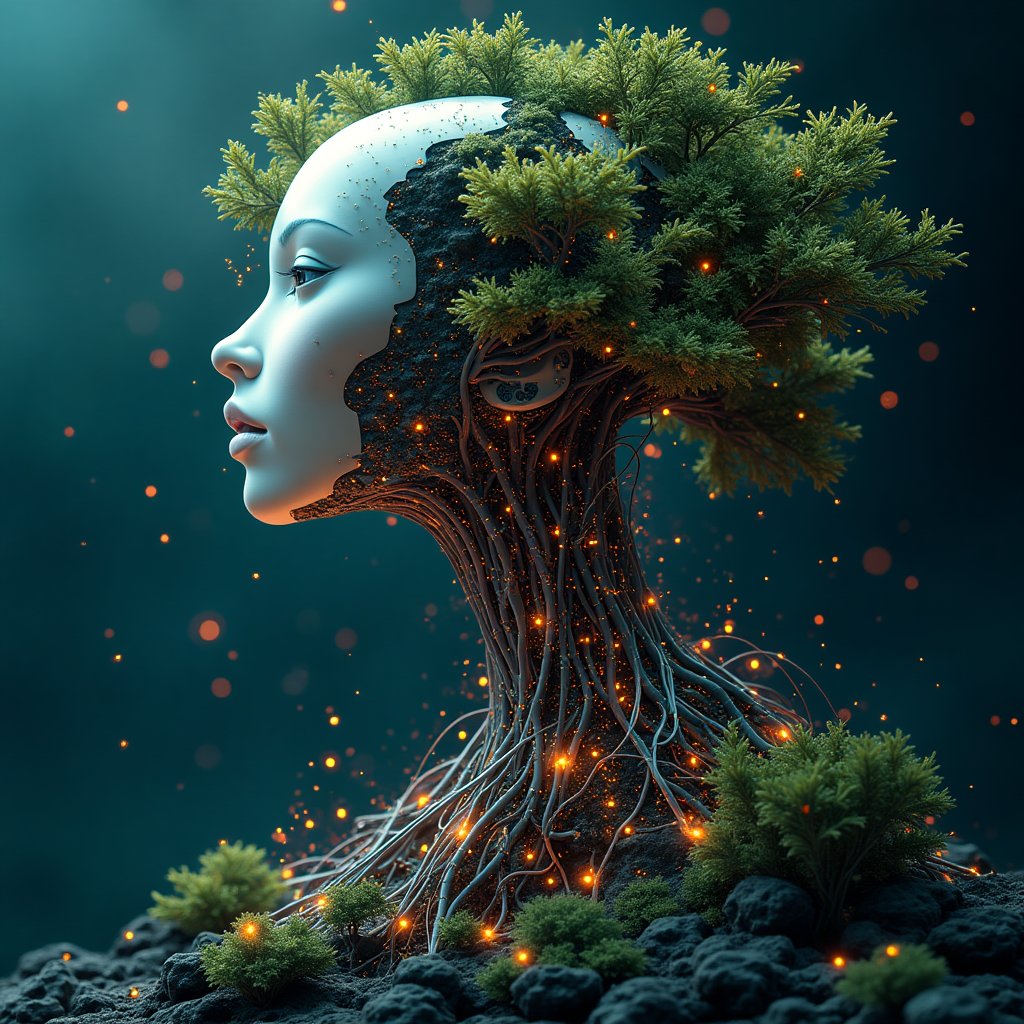

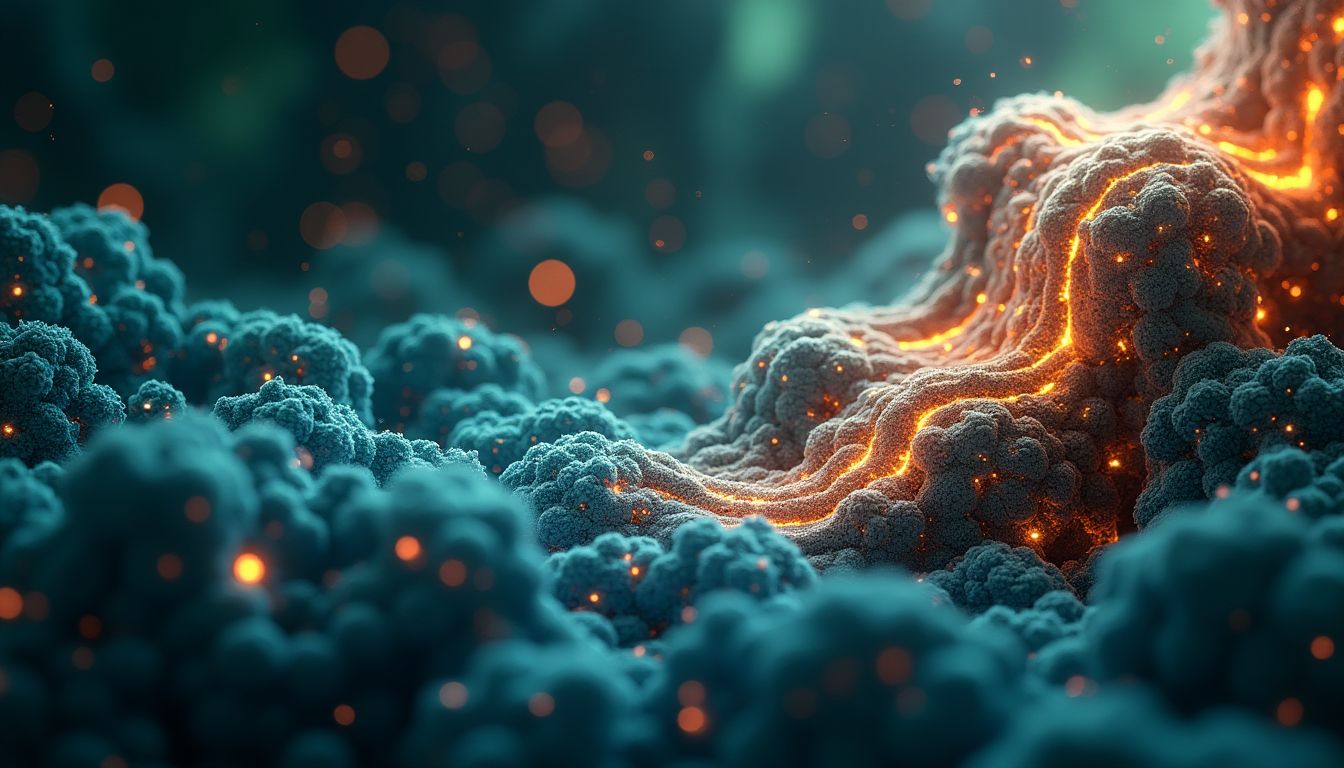
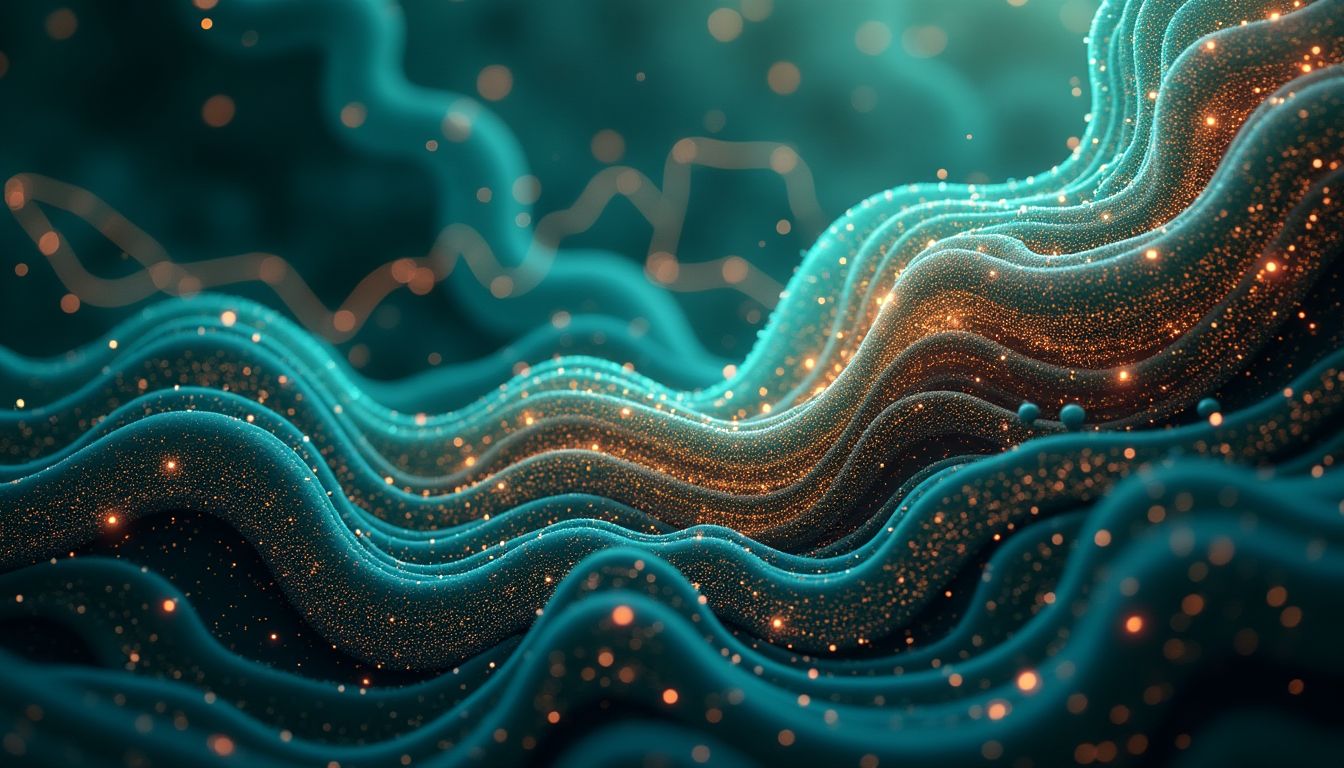
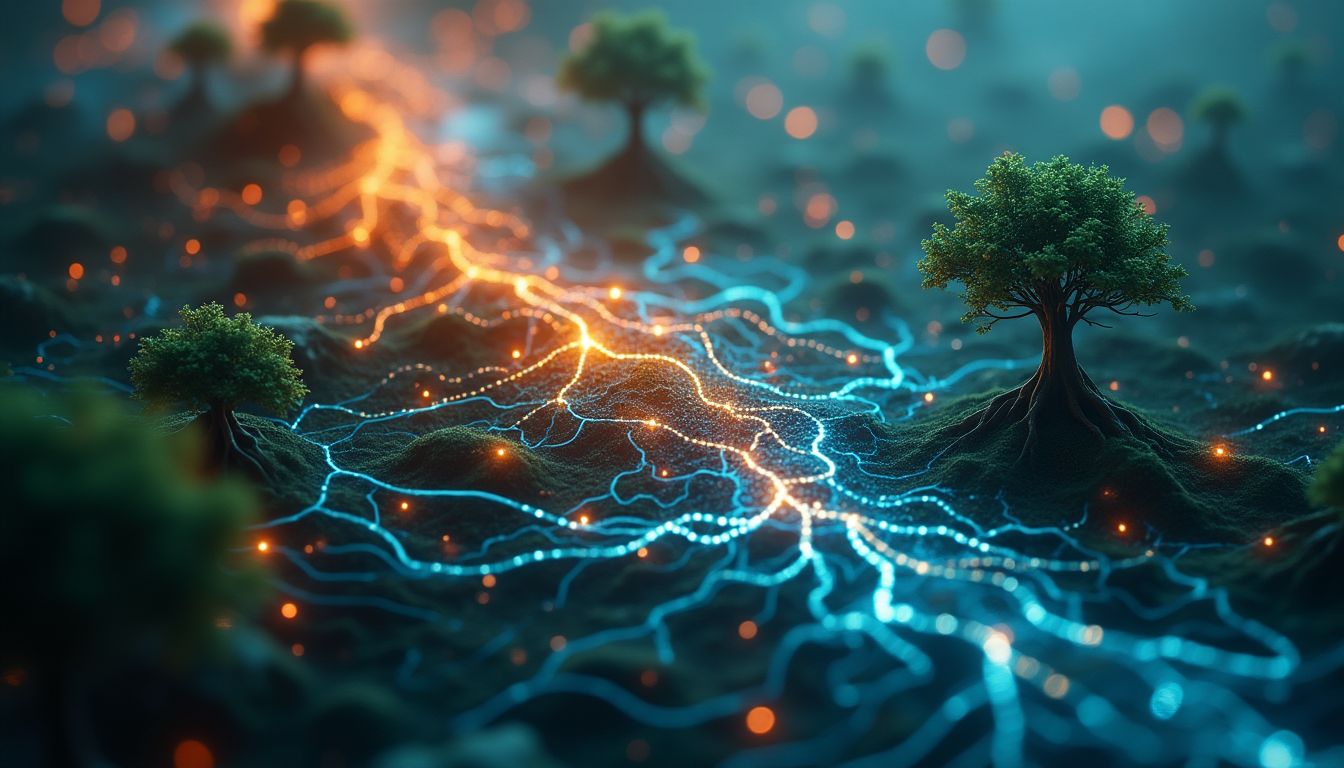
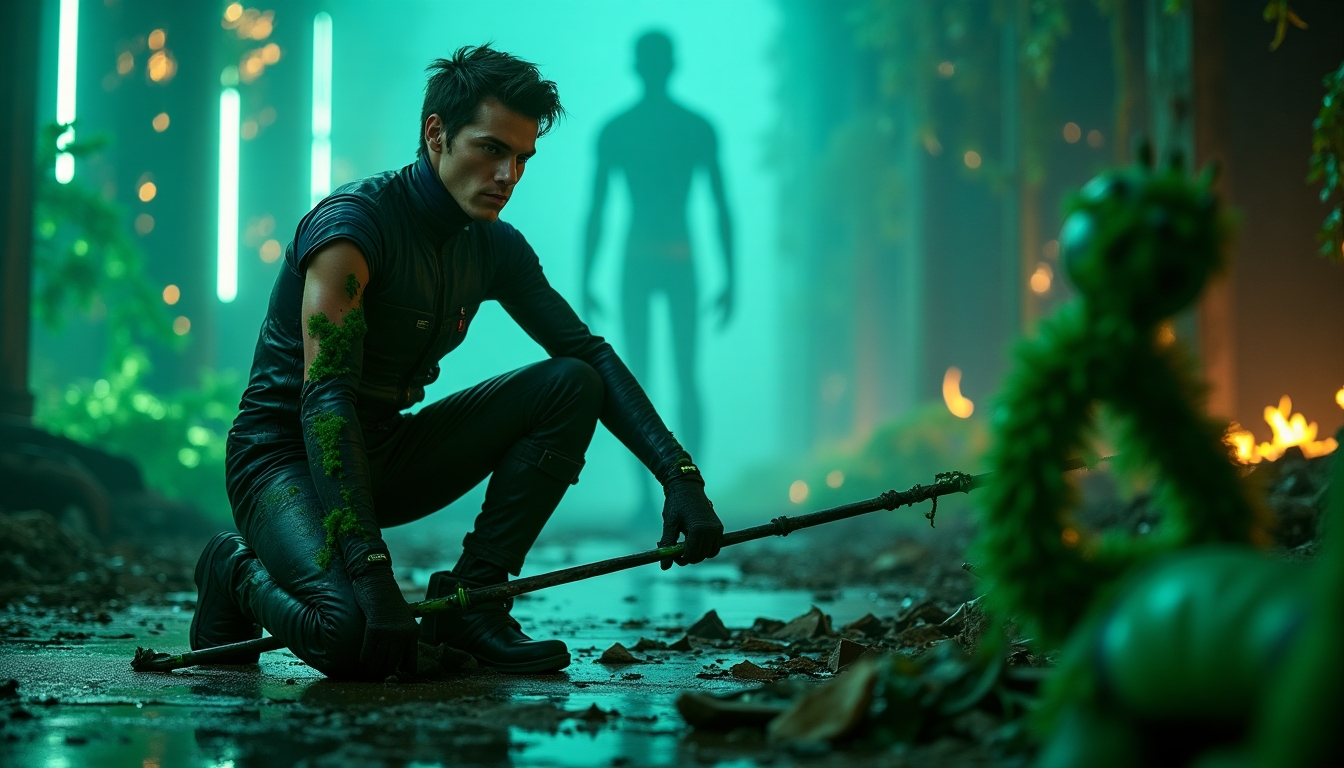
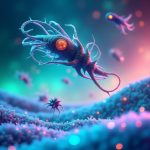






















2 comments